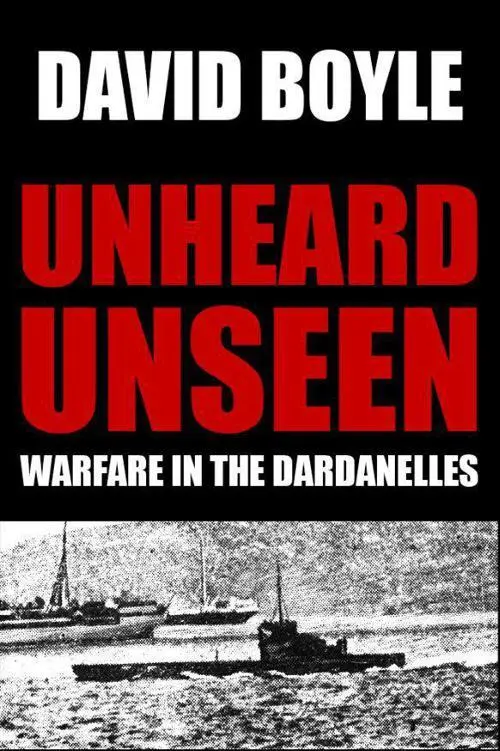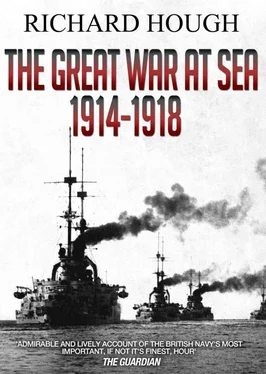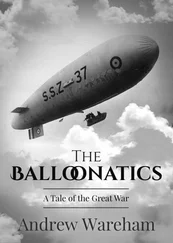SCAPA FLOW SCUTTLING
Reuter, Vice-Admiral Ludwig von, Scapa Flow : the Account of the Greatest Scuttling of all Time (1940). By the commander who carried it out.
van der Vat, Dan, The Grand Scuttle : the Sinking of the German Fleet at Scapa Flow in 1919 (1982). A comprehensive and entertaining account.
SHIPS
Hough, Richard, Dreadnought : a History of the Modem Battleship (1964). The emphasis on illustrations, diagrams, and statistics.
Marsh, Edgar J., British Destroyers (1966). Plans, statistics, photographs. authoritative text. Can never be superseded.
Parkes, Oscar, British Battleships (1957). The massive and definitive study of Royal Navy capital ships since the end of sail.
NB Issues of Jane’s Fighting Ships up to 1919 also relate, as does Breyer, Siegfried, Schlachtschiffe und Schlachtkreuzer (1970).
SUBMARINES AND U-BOATS
Bauer, Admiral Hermann, Reichsleitung und U - Bootseinatz , 1914-18 (1956). A notable German submariner’s invaluable history.
Carr. Lieutenant William G., By Guess and by God : the Story of the British Submarines in the War (1930). An entertaining, lightweight book on the great exploits.
Chatterton, E. Keble, Fighting the U - boats (1942). A comprehensive history of one great U-boat campaign published in the throes of a second.
Edwards, Lieutenant-Commander K., We Dive at Dawn (1939). A concise and useful history of the submarine and its exploits during the Great War.
Gibson. R. H., and Prendergast, Maurice, The German Submarine War , 1914 - 18 (1931).Comprehensive and invaluable.
Jameson, Rear-Admiral Sir William, The Most Formidable Thing (1965). Another submariner’s excellent account. Reliable and entertaining.
Extract from
Unheard, Unseen
by David Boyle
If you enjoyed The Great War at Sea by Richard Hough, you may be interested in Unheard, Unseen: Warfare in the Dardanelles by David Boyle, also published by Endeavour Press.

The Dardanelles in the early hours of 27 April 1915. Here Agamemnon and the Greeks landed for the attack on Troy. Here Xerxes had ordered the sea to be lashed for destroying his invasion bridges. Here Lord Byron swam against the Hellespont current.
Now it was the very portals of the Ottoman Empire for the crew of the British submarine E14, staring silently into the darkness from the small conning tower, eight feet above the waves. It meant mines, forts, searchlights and wire submarine nets. It meant a formidable current pouring fresh water over strange and unpredictable layers of salt water up the 38 mile passage from the Mediterranean to the Sea of Marmora, and through one narrow point only three quarters of a mile wide. It meant undertaking possibly the longest dive ever contemplated in a submarine.
It also meant passing the wreckage of the submarines that had tried to pass that way in the days and weeks before: the French submarine Saphir and the British E15, lying wrecked and battered on a sandbank off Kephez Point, their dead buried on the beach, their survivors in captivity.
The sea was absolutely smooth and there was only a breath of air from the movement of the submarine itself. The canvas screens around the bridge had been removed to make the conning tower less visible. The electric batteries that would power their motors underwater had been charged to their highest pitch, as they waited in their harbour of Tenedos with its medieval castle, its windmills and its Greek sailing caiques , just a few miles from the site of ancient Troy.
E14 had weighed anchor at 1.40 in the morning. There was no escort for their lonely voyage. The goodbyes had been said. They had written their farewell letters and given them into safekeeping, knowing that the chances were now against their survival.
The submarine’s captain, Lieutenant Commander Courtney Boyle, had written three – to his wife, his parents and his solicitor – in the three hours warning he had been given at Mudros harbour the day before. Now he stood in his navy greatcoat, holding onto the rail, his binoculars around his neck, staring ahead in the blackness at the navigation lights of the allied warships, the greens and reds slipping away behind him. Next to him was his navigating officer, Lieutenant Reginald Lawrence, only 22 years old, a reserve officer from the merchant navy, who had been there just a year before in peacetime. Below, the executive officer, Edward Stanley, was supervising the control room, listening to the rhythmic pulse of the engines.
It was a flat calm and there was no moon. From the northern shore in the distance ahead of them came the boom of guns and the flash of high explosive, a reminder that British, Australian, New Zealand and Indian troops were now dug in on the beaches, after their dramatic and perilous landings 48 hours before. Closer to the invasion beaches, they could see the shimmer of tiny glows from the trenches, the cigarette ends and makeshift fires of the soldiers dug into the dunes.
On their left hand side, there was a huge searchlight by the Suan Dere river; Boyle’s first objective was to get as close as possible to the estuary there before diving. Beyond that, he could see searchlights on both shores, sweeping the sea ahead of them. He and Lawrence reckoned the one past the white cliffs on the southern shore must be Kephez Point, where E15 had come to grief and, further ahead, a more powerful yellow light, was the great fort at Chanak.
One diesel engine drove them ahead, and the noise and the fumes were horribly apparent to anyone on the conning tower, where the exhaust pipe was. Boyle was as experienced a submarine commander as any other afloat, but he was aware that he had not quite earned his commander’s confidence. The calculations about speed, battery endurance, current and all the rest had been going through his head constantly since the dramatic meeting in the fleet flagship just two weeks before when – like all but one in the room – he had judged the venture impossible. That single dissenting voice was now dead.
He was aware also that, if the commander of E15 had not declared the passage of the Dardanelles possible by submarine, then almost certainly – as the most senior commander present – he would have been asked to try anyway. The one ray of hope was that the Australian submarine AE2, under the command of Henry Stoker, had now signalled that they had got through. This news had reached the E14 immediately before their departure and had changed the mood of the crew from resigned acceptance to hopeful elation. The passage of the Dardanelles must be possible after all, even if it remained extraordinarily hazardous.
But Boyle did have a plan. It was to get as far as possible to conserve their battery before diving, to dive as deep as possible under the obstructions, but to rise to periscope depth as often as possible in the most difficult sections of the journey, where the current was most unpredictable, to make sure the submarine did not drift He was acutely aware that his own skill and experience was now the determining factor, above all others, in his survival, the survival of the other 29 men on board, and of course of the success or otherwise of the mission.
They passed a brightly lit hospital ship, with its red crosses illuminated under spotlights, and then they were alone at the mouth of the Dardanelles. The crew were sent below and the engine room hatch was closed as a precaution. The Suan Dere searchlight loomed ahead, swept over them and then came back. Had they been seen? It flashed away again. It was clear from the experience of the ancient trawlers the British were using as minesweepers that the batteries ignored small ships on the way up the Dardanelles, waiting for them to drift closer to the shore as they turned back before firing. It was not clear, however, how much the stripped down conning tower was visible.
Читать дальше













